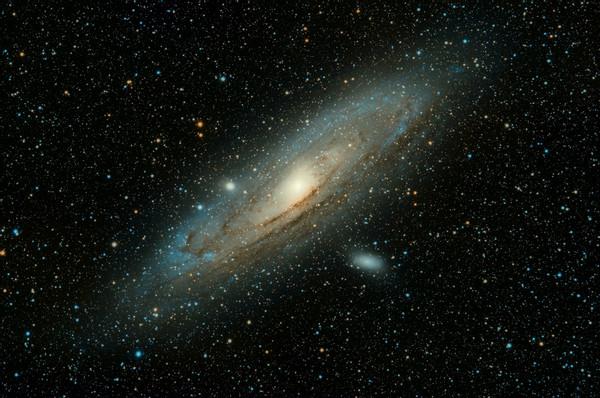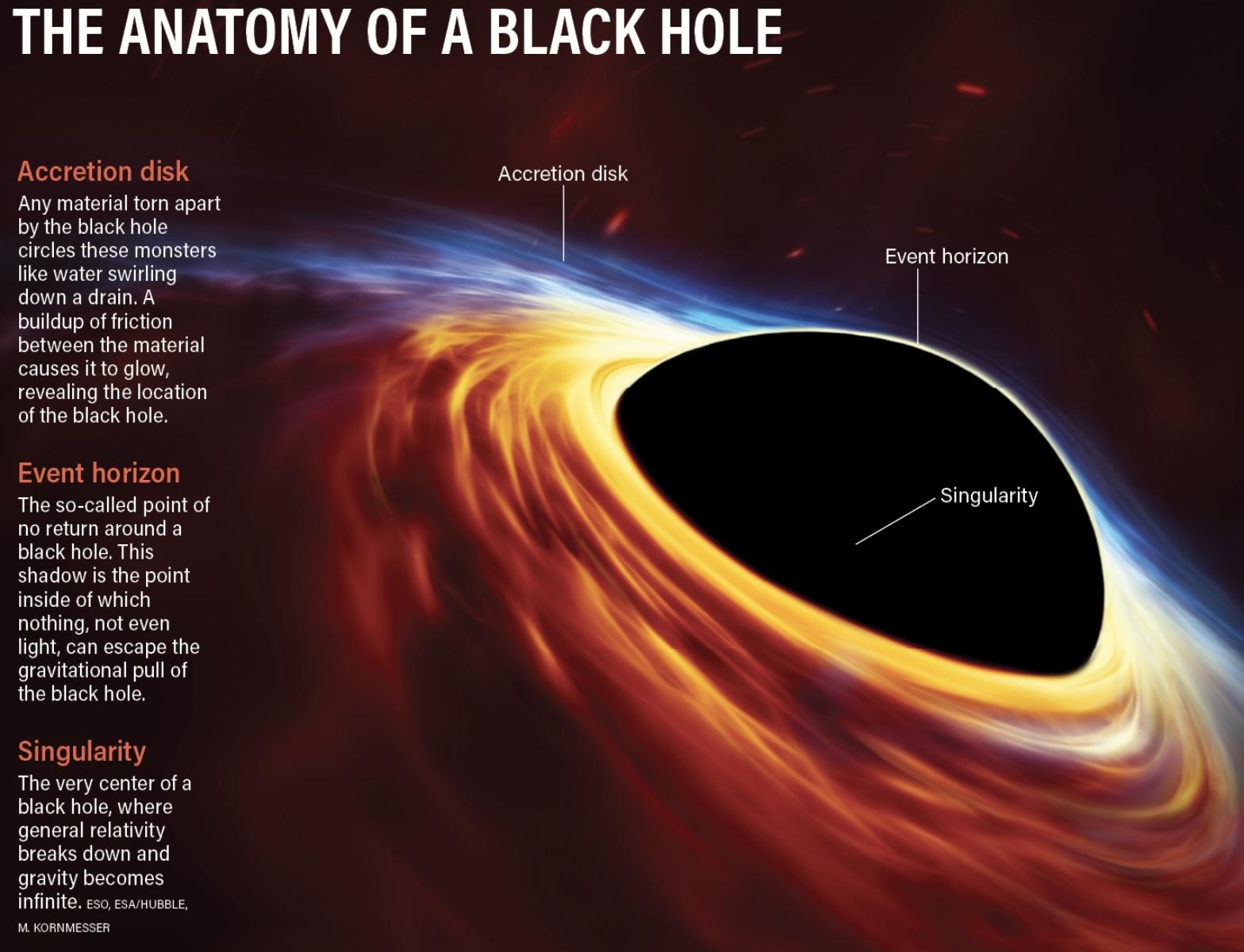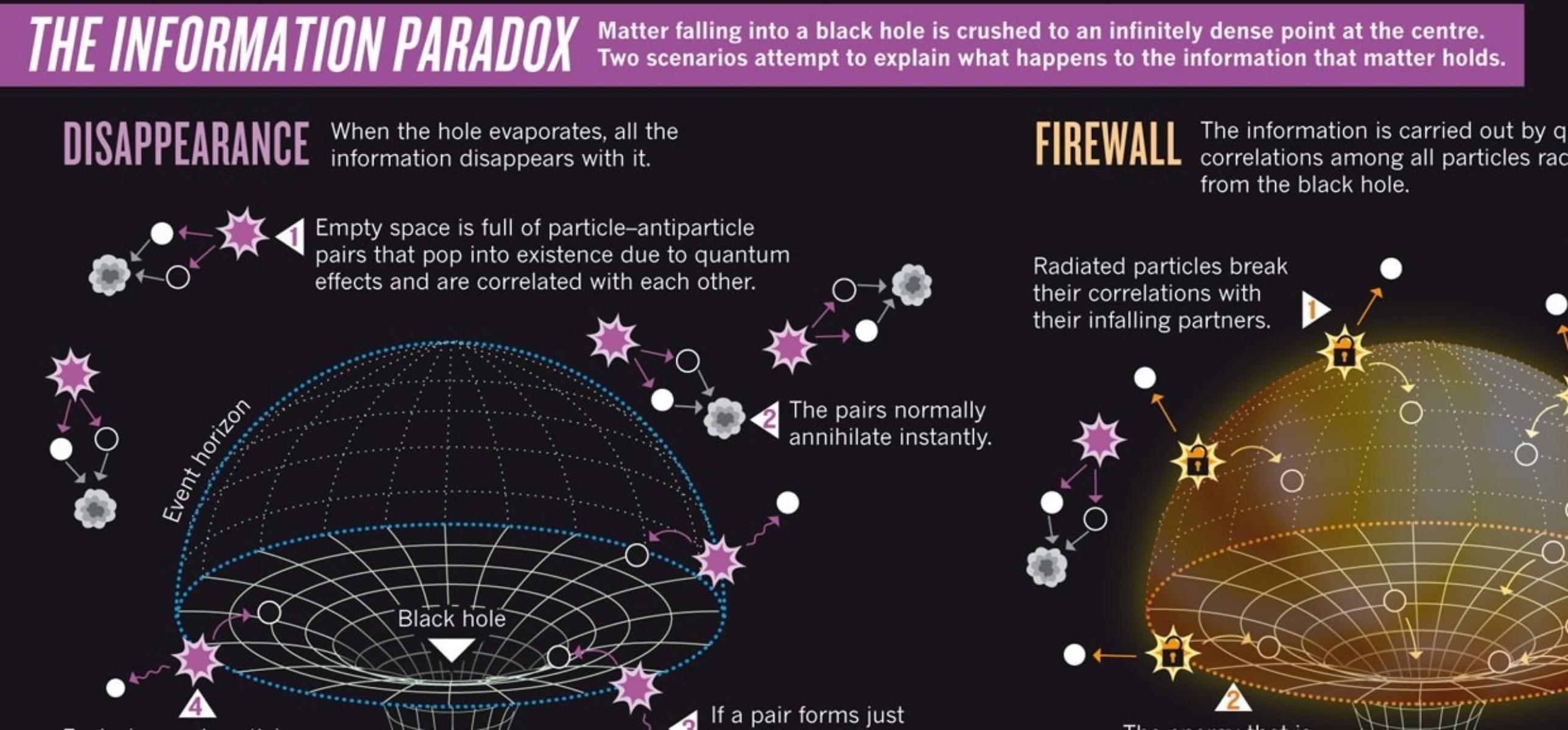Explore the World's Best Ideas
Join today and uncover 100+ curated journeys from 50+ topics. Unlock access to our mobile app with extensive features.
Blackhole Information Paradox
The relationship between matter and space gave rise to many interesting phenomena. We know two basic properties of matter — matter resists change (that’s how its mass is defined — Mass of the matter is the property that allows matter to resist a change in motion), and matter always remains conserved . It simply means, matter can’t be created or destroyed, yet it can only change forms. The holographic principle is one way or the other, related to the second property of matter.
Some scientists believe we might actually be living in a hologram.
41
372 reads
Even the laws of nature become easy to understand when applied to two-dimensions than in three-dimensions, they say. They’ve arrived at the conclusion after a series of mathematical calculations. Don’t worry! It’s just a theoretical concept, that could come out as a reality. Live your life as you’ve lived so long, in a three-dimensional world, without the limitations of a hologram.
38
292 reads
Holographic Principle
The idea that our Universe might be a hologram came out of the conception of String Theory.
Holographic principle — According to this principle , all the information, which makes up our 3D ‘reality’ (plus time) is contained in a 2D surface on its boundaries. The holographic principle says that everything that happens in a space can be explained in terms of information that’s somehow stored on the surface of that space.
Before jumping on the Holographic principle, we’re going to understand the hologram so that the principle could be easily grasped.
38
250 reads
What is a hologram?
A hologram is a three-dimensional image reproduced from a pattern of interference produced by a split coherent beam of radiation (such as a laser). A simple example of a hologram is a glittering hologram on your credit card.
37
255 reads
Why Holographic Principle?
You might be thinking, “why we’re concentrating so much on this weird principle, right?” There are complex things that couldn’t be explained otherwise without predicting our universe and reality working as per the Holographic principle. For example, the problem of combining quantum mechanics, and Einstein’s theory of relativity is one of the hardest problems in physics. Quantum mechanics is a theory that describes things at a fine scale, like atoms or much finer. On the contrary, Einstein’s theory of relativity forms the basis to understand the gravity and the universe on a grand scale.
37
210 reads
...
We can’t combine both of these theories. Some scientists believe the only way to do so is through the Holographic Universe principle.
At the beginning of this article, we discussed the two basic properties of matter, particularly the second one, that is to say, conservation of mass. Now we’re going to relate this property with the Holographic principle. Here we go…
36
195 reads
Principle of Conservation of mass
In the 18th century, Antoine-Laurent Lavoisier’s work provided physics with great insight into the matter. Lavoisier along with his wife, Marie Anne, experimented with matter and came to the conclusion that matter can’t be destroyed; it just changes from one form to another. The principle became famous as the principle of conservation of mass .So, in a nutshell, nothing is lost. I
36
168 reads
Black Hole
In fact, even Quantum mechanics says, information never gets destroyed no matter what. It can change its form, but never gets completely lost.
Blackhole — A black hole is a region of spacetime where gravity is so strong that nothing — no particles or even electromagnetic radiation such as light — can escape from it. Anything with a mass can become a black hole, once the mass is compressed infinitesimally. Our Sun can also become a black hole once compressed to a size of three kilometers in radius.
37
153 reads
Event Horizon
Event horizon — it’s the boundary of the region of space-time from which nothing in our universe could escape, not even light. It acts as a one-way portal, around the black hole. Objects or matter can fall through the event horizon into the black hole, but it’s never the other way around, that is to say, nothing could ever come out of the event horizon. In simple words, the event horizon is the tip or edge of the river from where the water falls in a water fall plunge pool. If anything falls from this tip or edge, it’d go inside, forever without any possibility of return.
37
136 reads
BHIP
In the year 1981, the famous scientist Stephen Hawking predicted something unusual happening at the event horizon. He predicted that information is being torn apart or the information is being destroyed forever — called the Black hole Information Paradox — in turn, violating the laws of physics.
Consider the black hole as an eternal eraser or a delete key on your keyboard — as their function is to get rid of information similar is the case of a black hole.
(Note: Information here means the arrangement of particles, and details of the state in a definite way.
37
130 reads
...
The elementary particles that make up the information are same but their way or manner of binding together undergoes a change in comparison to their earlier state. )
In a nutshell, the holographic principle is a try to prove that Hawking’s conclusion was incorrect, and that information is in fact preserved.
36
132 reads
Possibilities for solving this paradox
Three possibilities arise when we try to solve the black hole information paradox, and these possibilities are:
- The information is lost forever — then we’d need to reformulate our laws of physics
- The information is hidden — the information passes through the black hole to the other side in another universe from a white hole(in case it exists)
- The information is not lost forever and it’s safe
Gerard t’ Hooft, Leonard Suskind, and Juan Maldacena tried to solve the information paradox. They tried to work upon the third possibility.
36
114 reads
Recent research on the black hole information paradox
Scientists discovered that when quantum gravitational corrections are taken into account, matter collapsing into a black hole leaves an impression in the black hole’s gravitational field. Professor Xavier Calmet of the University of Sussex described this impression as “quantum hair” in an article published in the journal Physics Letters B.
The researchers looked at the gravitational fields of two stars with similar total masses and radii but differing compositions.
36
113 reads
...
The two stars have the same gravitational potential at the classical level, but the potential varies depending on the star’s composition at the quantum level. When stars collide to form black holes, their gravitational fields keep the memory of what they were comprised of.
36
109 reads
Holometer Experiment
The Fermilab Holometer is intended to be the world’s most sensitive laser interferometer, surpassing the sensitivity of even the GEO600 and LIGO systems, and theoretically able to detect holographic fluctuations in spacetime. Holometer has begun collecting data that will help determine whether the universe fits the holographic principle.
There’s a point where our fundamental physics stops making any sense in terms of explaining reality. The objects, matter, even light starts behaving in an abnormal manner. Questions like “What are we?” “Where are we?” “Why are we?”
36
103 reads
...
starts to dominate even more at this point.
Many physicists believe that the holographic principle will be one of the fundamental physical principles that will allow insights into a greater understanding of reality. Understanding the implications of Holographic Principle means understanding the profound aspects of our reality at the most fundamental level that is otherwise hidden….
37
114 reads
IDEAS CURATED BY
卐 || एकं सत विप्रा बहुधा वदन्ति || Enthusiast || Collection Of Some Best Reads || Decentralizing...
अर्हम् Arham's ideas are part of this journey:
Learn more about scienceandnature with this collection
The importance of physical activity
The role of genetics in lifespan
How to maintain a healthy diet
Related collections
Similar ideas
1 idea
Black Hole Information Paradox
en.m.wikipedia.org
9 ideas
8 ideas
Wormhole - Wikipedia
en.wikipedia.org
Read & Learn
20x Faster
without
deepstash
with
deepstash
with
deepstash
Personalized microlearning
—
100+ Learning Journeys
—
Access to 200,000+ ideas
—
Access to the mobile app
—
Unlimited idea saving
—
—
Unlimited history
—
—
Unlimited listening to ideas
—
—
Downloading & offline access
—
—
Supercharge your mind with one idea per day
Enter your email and spend 1 minute every day to learn something new.
I agree to receive email updates





